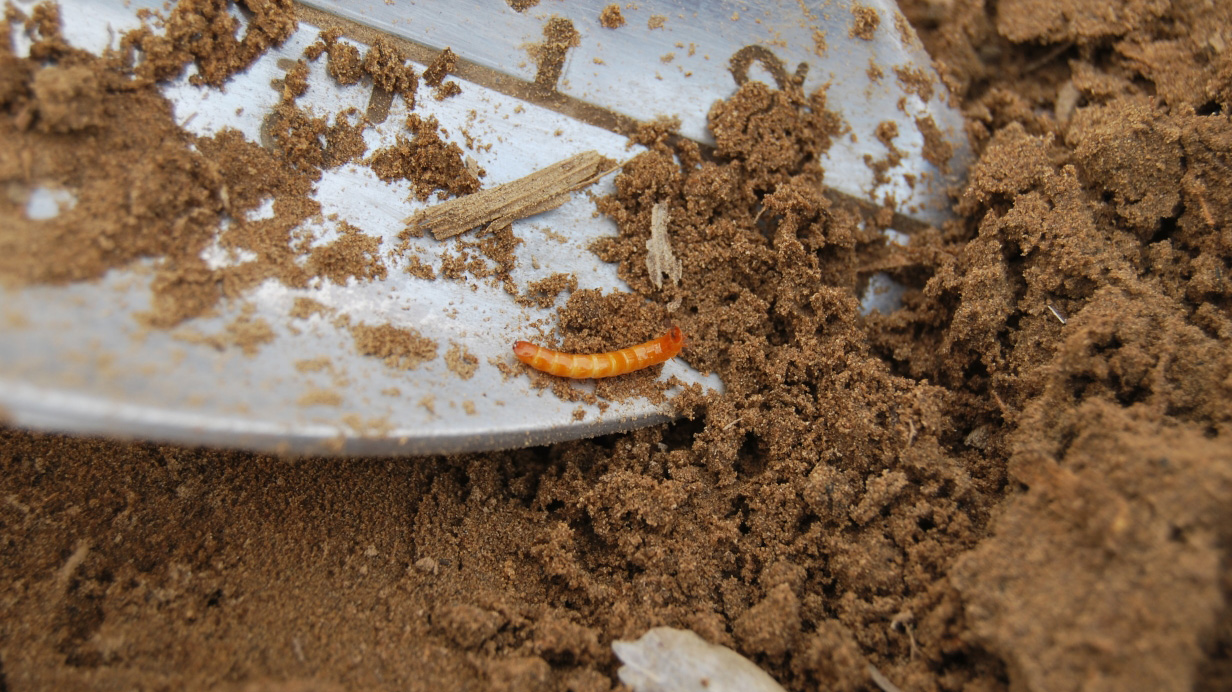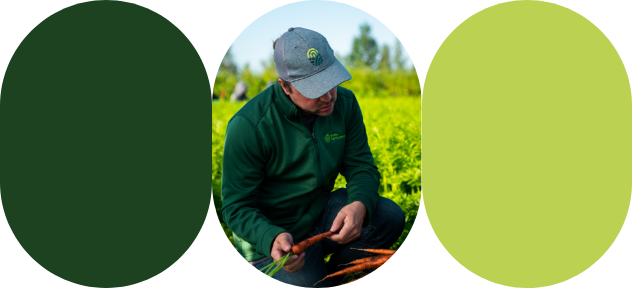How to deal with wireworms
Until recently, most of the seeds used in Québec were coated with an insecticide. But the trend is reversing, and an integrated approach is now used that includes scouting and probability models for infestation and crop damage. This means more intelligence and less chemicals, benefiting both farmers and the environment.
Some plots are at higher risk of infestation by the nine species of pests known as wireworms that are found in Québec. Wireworms are a few millimetres to a few centimetres long and feed on soil surfaces from April to June and from mid-August to mid-October when conditions are cool and wet. They feed indiscriminately on organic matter, including crop residue, manure, and tender seeds.
In recent years, results from the Centre de recherche sur les grains (CÉROM) have clearly shown that insecticides used on seeds to control wireworms were unjustified in 96% of cases.
Québec’s agricultural community has responded proactively. “We have moved to an integrated approach that includes proper scouting,” says François Labrie, Agri-Advisor at Sollio Agriculture.
While nearly 80% of corn seeds and 25% of soybean seeds are still treated elsewhere in Canada, Philippe Defoy, Agronomist at Maizex, says that, in Québec, these percentages have dropped sharply because such treatment requires an agronomist’s prescription. However, Defoy is very proud of Maizex’s flexibility to meet agronomist and customer specifications with custom bagging in Ontario.
A wireworm prediction tool (VFF QC, available at info-sols.ca) was introduced in 2017 to assess risk based on:
Previous crops
Soil texture
Organic matter
Geographical location
Tillage
Trapping
Every spring, the cooperatives in the Sollio Agriculture network are hard at work trapping wireworms. During the seeding period, when soil temperature is above 8 °C at a depth of 10 centimetres, they dig pitfall traps that are 15 centimetres wide and deep and place an attractive mixture of equal parts whole grain, flour, and groats in them. The grains germinate and the mixture ferments, releasing carbon dioxide, which attracts the worms.
At Sollio & Avantis Agriculture coopérative, agronomist Frédéric Normand, Director of Agri-environment and Crop Production, and his team scout for worms. In 2021, they scouted for an equivalent of 130 hours on 22 farms (recruited in 2020).
Sollio & Avantis were able to send around 168 wireworms caught on the participating farms to a laboratory. Better still, the team compiled and sent its results to CÉROM, which manages the VFF QC tool, adding them to the database of recent results alongside those reported by contributors to the Réseau d'avertissements phytosanitaires (RAP) for field crops. The work will continue in 2021, with targeted fall scouting occurring mainly in meadows. “We are proud to be able to better justify our recommendations and contribute to reducing the footprint of agriculture,” says Normand.
La Coop Comax’s (now Agiska Coopérative) Crop and Agri-environment team, which has committed to undertaking the Council of Sustainable Industries’ ecoresponsible certification process (first level), is also hard at work. It scouted 23 fields for wireworms in 2019, and 35 fields in 2020. These efforts, along with routine seedling-quality monitoring, have helped advisors to refine their understanding of which fields are most and least at risk.
The results speak for themselves: while nearly 100% of corn seeds and more than 50% of soybean seeds were treated in 2016, the combined corn and soybean percentage dropped to 48% in 2018, 27% in 2019, and 19% in 2020. Today’s approach is very different from the all-risk insurance approach of the past. “There is more agronomic thinking—we weigh different factors to really manage the risk,” says agronomist Mario Rivard. He also notes that neonicotinoids have not been mindlessly replaced by other insecticides that pose less risk to the environment and human health.
Mathematics and theory
As the wireworm life cycle can be long (one to six years in the larval stages before reaching adulthood), scouting gives a picture that remains reliable for more than a year in the same field, which encourages field observations, says Labrie. Scouting has its advantages, but the VFF QC mathematical model, which CÉROM considers to be 85% reliable, provides a solid estimate of the risk.
Introduced in 2017, the model was based on scouting data from 2011 to 2016. Since then, new scouting results have been fed into the tool, refining the predictions. Julien Saguez, Biologist, Entomologist, and Biosurveillance Researcher at CÉROM, would like to see more data inputs from areas that grow less corn.
Five ways to prevent wireworm damage
Enrich your rotation with crops that are unattractive to wireworms, such as:
Soybeans
Alfalfa
Sunflower
Buckwheat
Till the soil:
Do this in spring and fall when worms are on the surface. Turning the soil exposes the worms to predation and desiccation.
Sow early but in good conditions:
This will encourage rapid germination and emergence within seven days. After the six-leaf stage, the corn is not damaged.
Provide the best growing conditions:
Good drainage
Low compaction
Soil that warms up quickly in spring
Increase the seeding rate:
This will make up for possible seedlings losses, especially in high-risk fields.
Sources:
Ministry of Agriculture, Food and Rural Affairs. Photo credit: © King’s Printer for Ontario, 2023
This article originally appeared in the May-June 2021 Cooperateur magazine.



